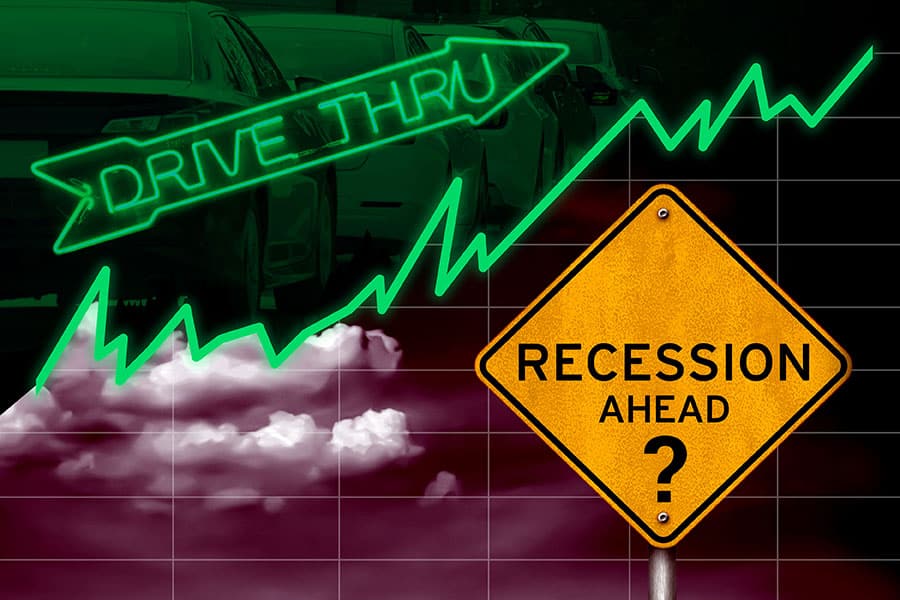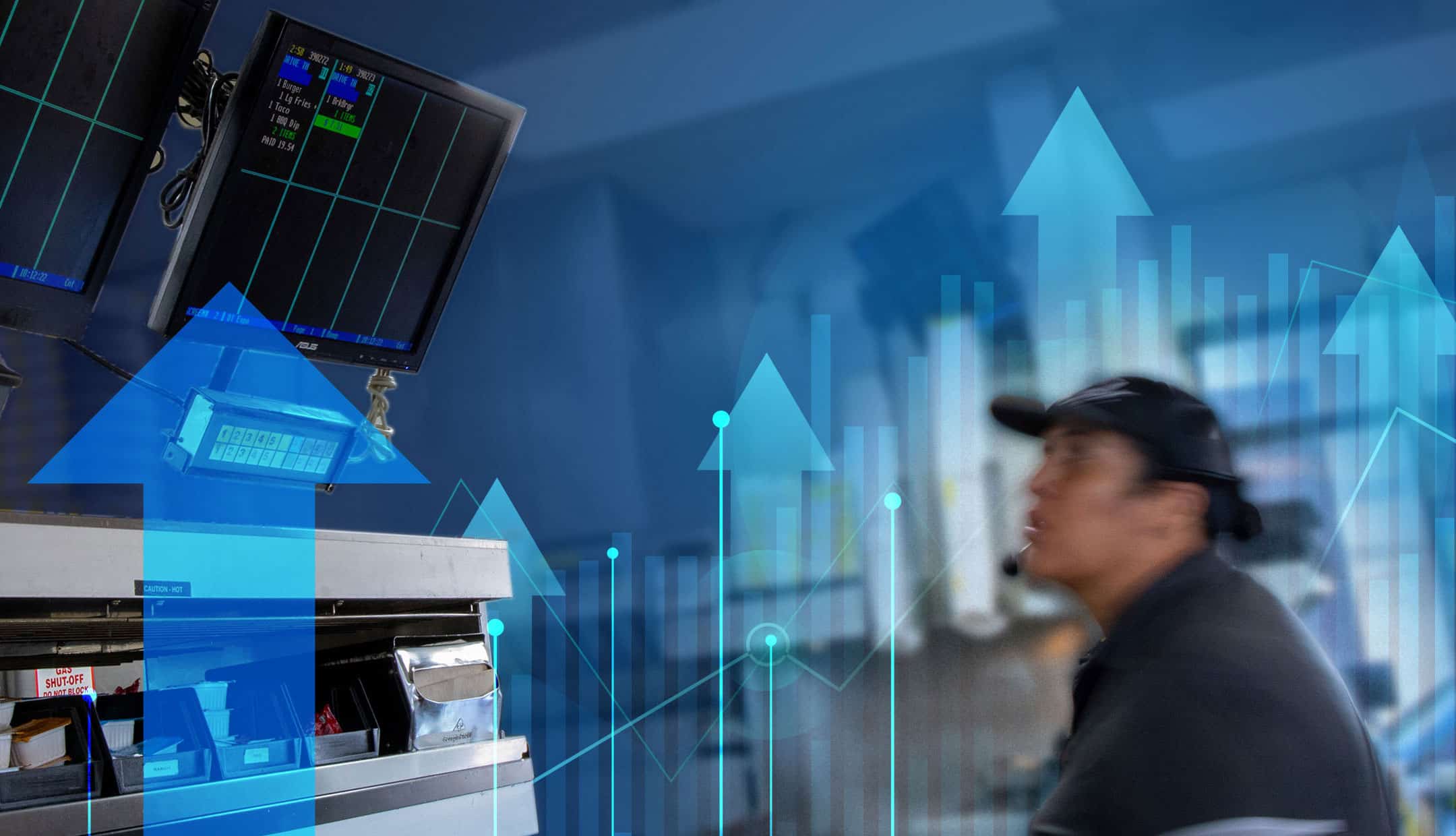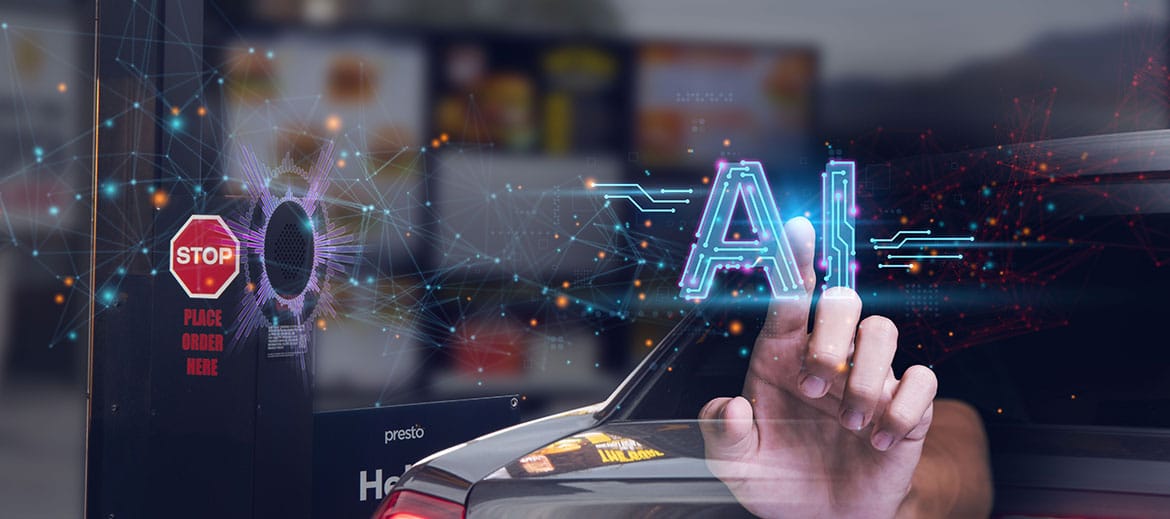As the U.S. economy braces itself for a potential recession, savvy restaurant operators should already be thinking about how to weather that particular storm and stay ahead of the curve.
It’s convenient, it’s satisfying and it’s inexpensive. With more menu choices than ever, about one quarter of the U.S. population eats at a fast casual or quick-service restaurant (QSR) on a daily basis with over 70% using the drive-thru lane.
The restaurant industry in the U.S. has seen steady and robust growth over the past few decades, despite challenges caused by the pandemic. Demand at the drive-thru has soared during the last two years, allowing consumers a socially distant way of enjoying food, and going out to eat. The drive-thru has been a lifeline for many restaurant chains, and the industry remains stronger than ever as more restaurants are investing in their drive-thru to meet growing consumer demand. According to a recent report by TechNavio, “the fast food market growth will increase by $87.27 bn during 2022-2025 and is expected to grow at a CAGR of 2.45% during this period.”
Although quick-service restaurants (QSRs) continue to see a healthy growth, undoubtedly, they are faced with rising food costs, labor costs, energy costs, and even rent hikes – all skyrocketing to unheard of levels. Against this backdrop, do you wonder how the industry (and your business) will be impacted by the upcoming recession?
Is a recession imminent?
With inflation rates at a 40 year-high, rising interest rates, soaring oil and gas prices, global supply chain issues and the ongoing war, we’re definitely close to a recession if not already in it. The technical definition of a recession is having two straight negative quarters. In the first quarter of 2022, the real gross domestic product (GDP) decreased at an annual rate of 1.5 percent. As we’re nearing the end of Q2, we will probably have another negative quarter of growth or be quite flat.
Why is your grocery bill going up? There are four main factors currently fueling much of the price increase: sharply rising labor costs due to the labor shortage, higher energy prices due to increased demand and the war in Ukraine threatening supply from Russia, increasing interest rates, and the global supply chain issues that are disrupting supply. Each one of these factors push the cost of everyday consumer goods such as groceries higher while demand remains as high as ever. Even the federal reserve has increased interest rates to try to bring down demand to meet the supply, but bringing down demand could also cause a recession.
How would the drive-thru industry be impacted by the recession?
The drive-thru tends to do well in any economy especially during a recession, as consumers trade down from expensive and casual dining options to fast casual and quick-service restaurants. How people spend their money is shifting as the economy slows and inflation pushes prices higher everywhere, including gas stations, grocery stores, and luxury retail shops. Drive-thrus have long been considered evergreen and have traditionally done well during economic downturns due to affordability as grocery prices increase at a faster rate. “The cost of food away from home rose 7.4% over the 12 months ended in May, but prices for food at home climbed even faster, shooting up 11.9%”, according to a recent report from the Bureau of Labor Statistics.
When prices are higher, competition is steeper, and consumers are more cost-conscious, restaurants can’t afford not to be as efficient and resourceful as possible. What’s more, in this current environment, restaurants need to find ways to operate optimally while dealing with a major labor shortage and having to compete with the gig economy for the same pool of the workforce.
During this economic downtown combined with labor shortage, restaurant operators need to maximize the use of their existing resources, automate operations so they can keep costs low, and ensure their business is optimized for growth and not just survival. Technology can help solve each of these challenges.
How will the unemployment rate be affected by the recession?
We are experiencing an unprecedented labor shortage not seen since World War II in the restaurant and hospitality industry, so I don’t think there will be a significant increase in the unemployment rate even if we enter a recession in the next few months. There’s been a rising share of older U.S. adults who have permanently left the workforce in the last couple of years during the pandemic, especially Baby Boomers. There’s been a huge group of people who have permanently left the workforce in the last couple of years during the pandemic, especially baby boomers. “As of the third quarter of 2021, 50.3% of U.S. adults 55 and older said they were out of the labor force due to retirement”, according to a Pew Research Center analysis finding.
The workforce has permanently shrunk, and immigration is almost dead. And when you have these two factors combined, it’s a recipe for labor shrinkage. While the unemployment rate is at rock bottom at the moment, it might slightly increase to 5 or 6%, worst case scenario, if we were to enter into a recession anytime soon, but I don’t think it’s going to be as high as 10% during the 2007-2009 recession.
Investing in automation solutions not only helps streamline your operations and costs, it also helps boost staff retention, and most importantly it creates a better customer experience.
When do we expect to come out of the recession?
The most recent recession occurred in 2020 and was brief — only two months long. I predict we will come out of the recession by early next year at the latest, but probably by the last quarter of this year. We’ll see a rebound. Inflation is going to slow down. The gas prices will go down as more gas production comes online. Problems with the supply chain started with COVID-19 and were magnified by strong consumer demand post pandemic should get resolved soon.
How can the drive-thru industry prepare for a recession?
What the industry should always be doing is continue to improve on its basics and key metrics to optimize and maximize their drive-thru operations:
- Revenue per car
- Amount of labor it takes to serve a car
- Speed of service
Even though the drive-thru industry is considered evergreen and can weather any economic storm, in order to stay competitive, drive-thru operators need to keep executing and tracking these KPIs very closely. Using A.I.-powered computer vision solutions in the drive-thru can offer restaurants smart analytics to identify bottlenecks, drive-offs and true speed of service providing owners and operators a good sense of how well their drive-thru is operating and whether it’s optimized for increased demand and revenue growth. Increasing the speed of service by 10% or increasing revenue per car by 10% can have a massive difference to your sales revenue.
The coming months and years will certainly bring their share of challenges and increasing competition to the restaurant industry. As the U.S. economy braces itself for a potential recession, savvy restaurant operators should already be thinking about how to weather that particular storm and stay ahead of the curve.
Next-gen A.I.-powered voice assistants and computer vision solutions may well be the answer. Unlike other assets, technology generally grows cheaper over time—which may mean that an investment today could pay dividends tomorrow. The creative use of enterprise-grade automation and optimization solutions can help restaurants meet macroeconomic challenges head-on, so they can operate more efficiently, serve customers more expediently, and offer a guest experience to remember.
Bottomline
QSRs have always benefitted from recessions. However, due to the labor shortage, the upcoming recession poses challenges the industry has never seen before. You need to start preparing … so you can’t just survive the recession but thrive in it. Automation can help, but you need to act now.
About the Author

Rajat founded Presto in 2008 while pursuing his doctorate at MIT. He has also cofounded Zimride (now Lyft), the popular ride-sharing company. A widely acknowledged expert in hospitality technology, Rajat is regularly featured in television interviews and media articles.
Contact mktg@presto.com to schedule a media interview or analyst briefing with him.



